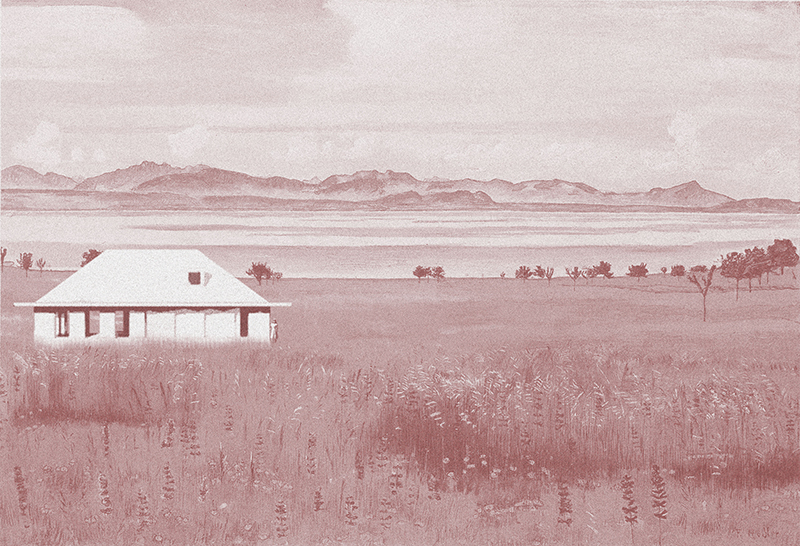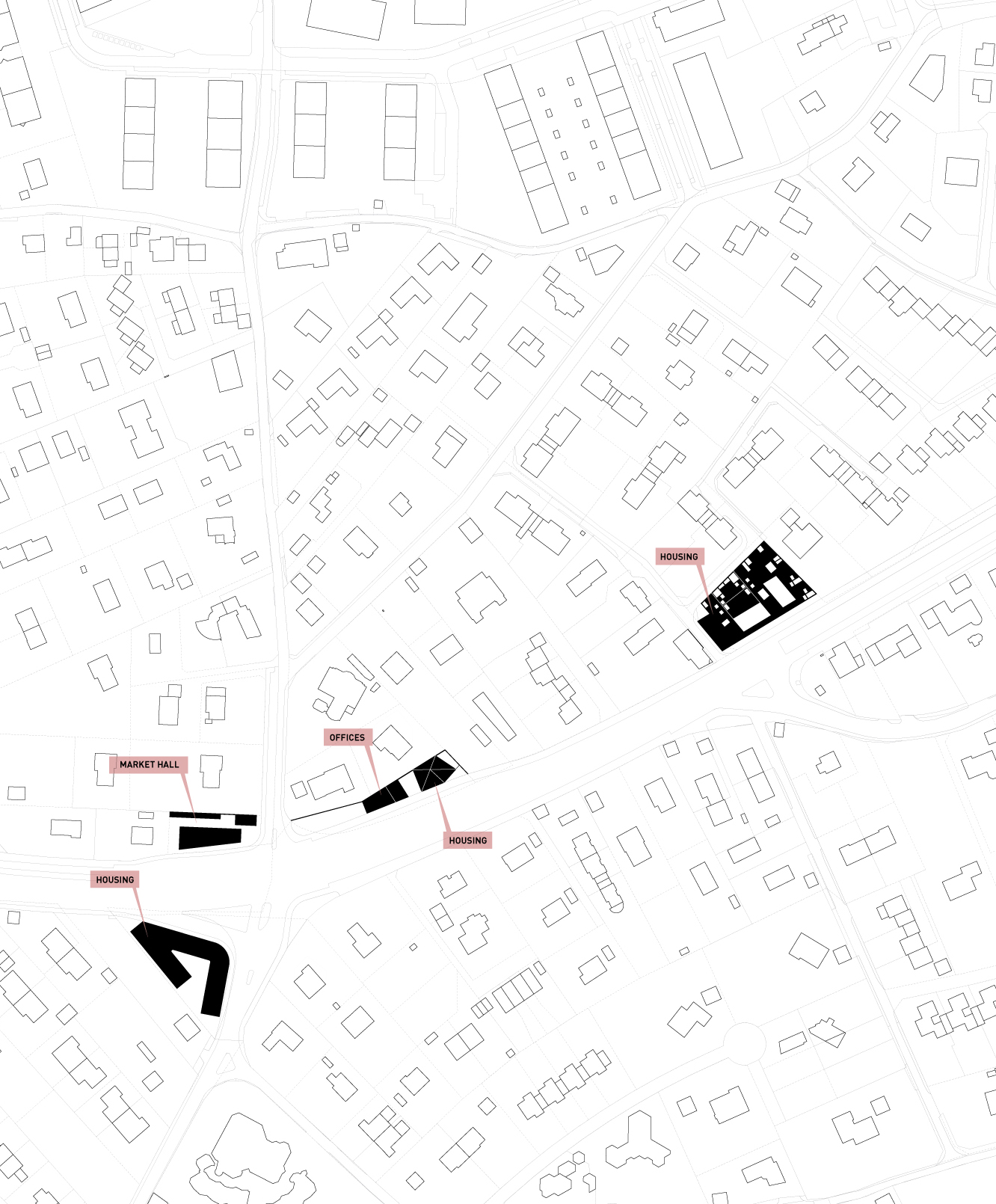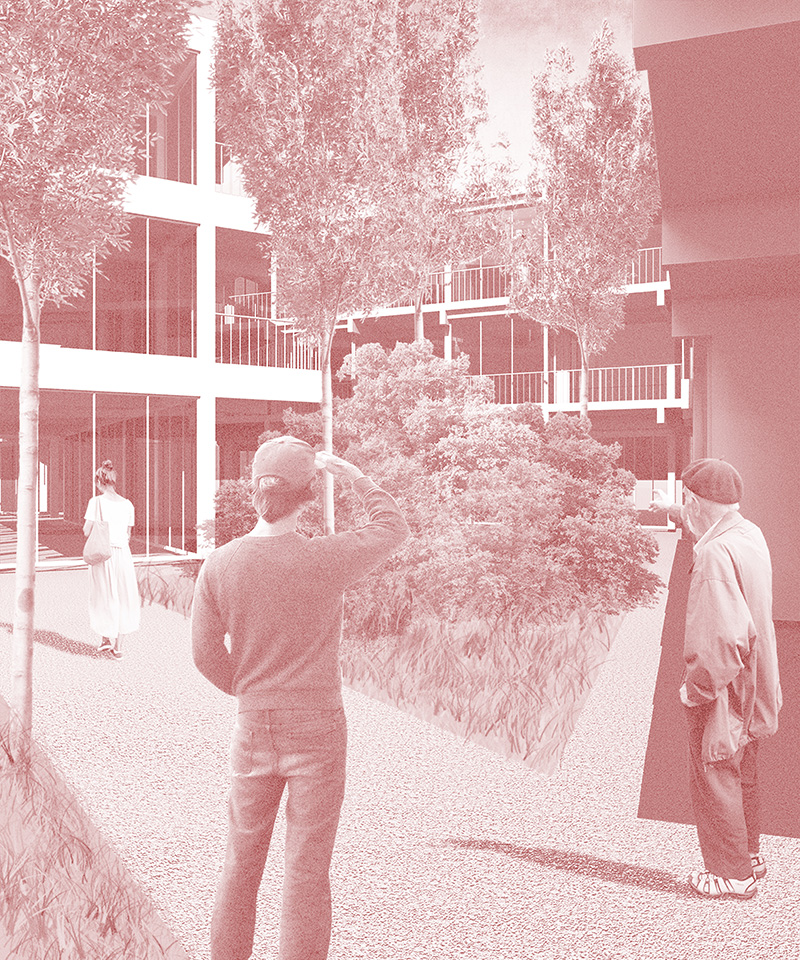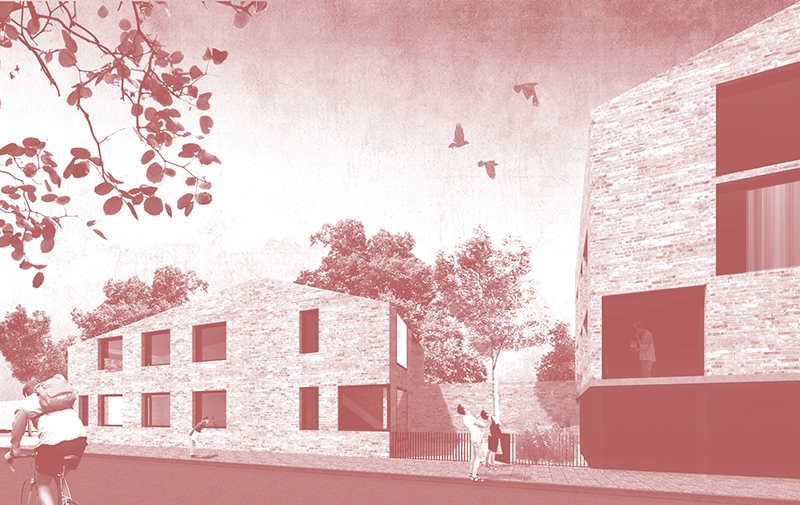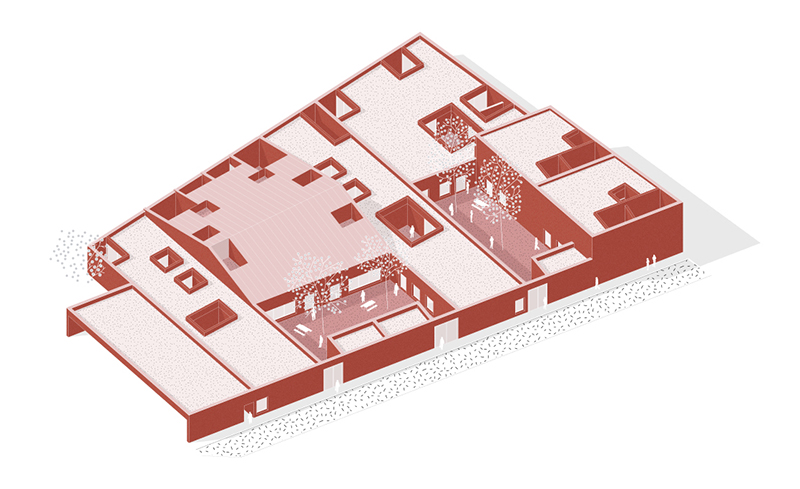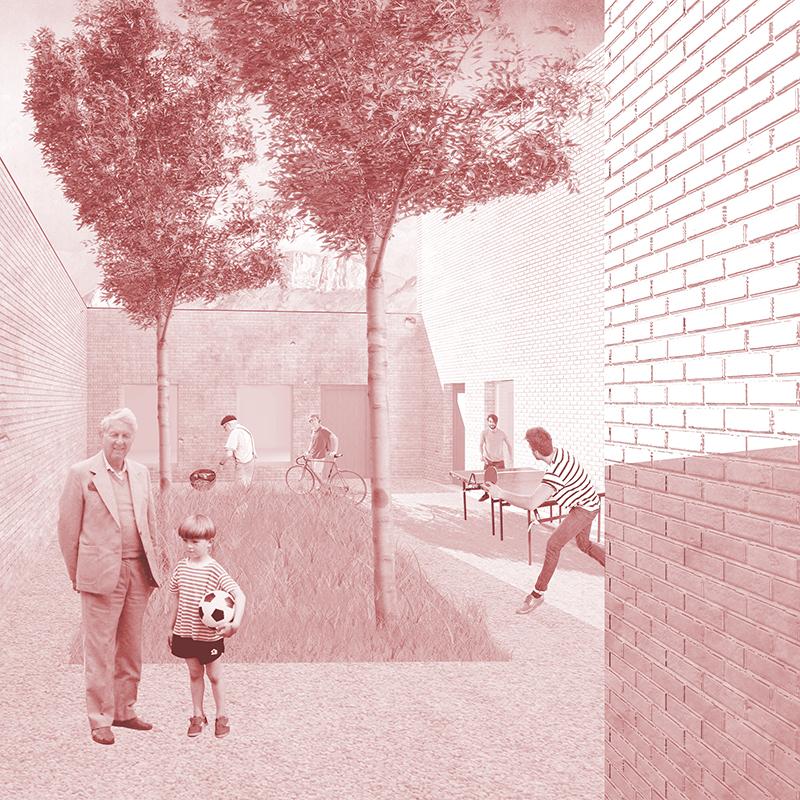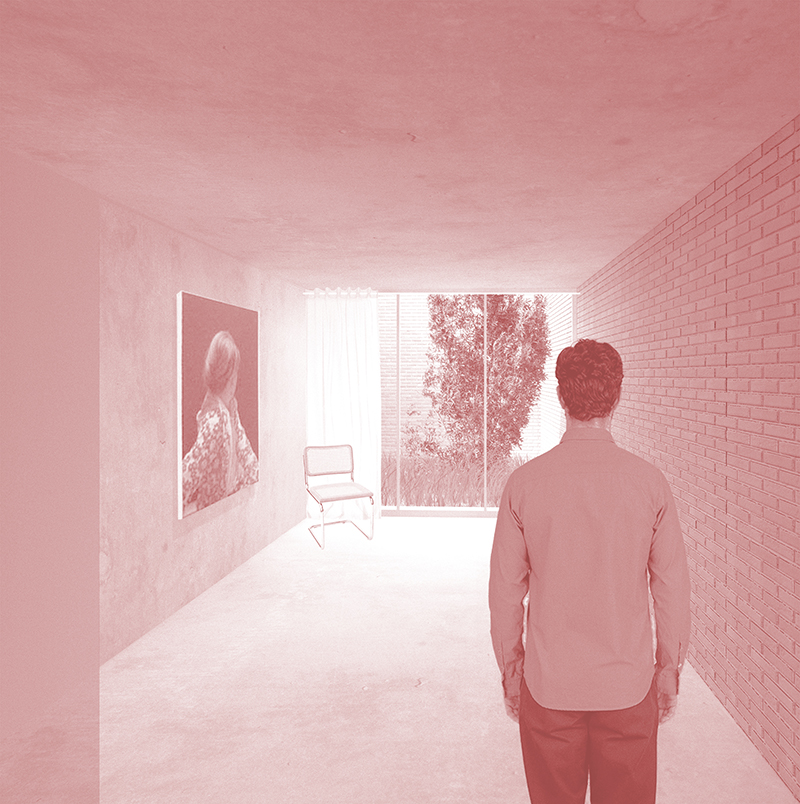☉ Europan 13 : Fantasy is a proposal by RUINS for Europan in 2015. It is located in Geneva Switzerland in an urban setting. Its scale is extralarge. Key material is brick.
The Swiss landscape is an inexhaustible muse. This is evidenced by the number of artists, thinkers and inventors who, from the beginning of the XVIII century, took it as a subject. By doing so, they gave it a big cultural value. Even though this subject is a constant manipulated by Jean-Jacques Rousseau, Caspar Wolf, Ferdinand Hodler, André Corboz, and many other people, the construction of the landscape suggested by those protagonists emphasizes changing which result from an evolution of the society. At the beginning “sublime”, even “terrible”, the high peaks of the Alps had inspired for a long time, romantic painters and poets. They willingly assign it a mystic atmosphere.
The arrival of the industrial revolution and the planning of the world exposition in 1896 will turn the “sublime” picturesque representation – challenging the landscape natural rules – toward a “beautiful” picturesque representation, which is fitting the human scale. This idea becomes real with the building of the so called “swiss village” during the 1896 world exposition: a wooden cabin with its clock and mountains.
This cultural myth of the village, as André Corboz said, is still deeply desired even though the reason for it has changed: “For most of the Swiss people, Switzerland is an agrarian country, inhabited by people interested in “nature”. Mountains, lakes, herds, fields and vineyards are the actual substance of the land, a fundamental reality – in which, of course, there are some exceptions (cities, industries, railways, highways, etc.) but they are not breaking the myth”.
Lyrism and romantism : A village culture
This lyricism and this romanticism regarding the nature, take its energy from the ills created by the urbanization of cities as Geneva, Zürich, Basel or Lausanne. The contamination, the high density, the promiscuity are as elements among others that doesn’t recall the Swiss landscape, culturally built. The picture of the garden, anthropized nature, is still favoured by the swiss people.
Moreover, our time it the one of owners. It inevitably leads the city to sprawl over its own boundaries. Thus, during the 70s and 80s, appear all over the Swiss country side (as elsewhere in the world), small houses which give to its delighted owner, a piece of nature. There, not far from the city, “the feeling of the proximity is never synonymous of a promiscuity”.
Mutation : The arrival of the hyperville
This paradigm shift (“urban exodus”) leads to a deeply mutation of the swiss land. In this way, it supports the description made by Jean-Jacques Rousseau in its own time: “The whole Switzerland, it’s so to speak, a big city whose wide and long streets more than the ones of Saint-Antoine, are spread with forests, cut with mountains and whose isolated scattered houses only communicate with each other’s by English gardens».
The mutation of the village into pavilions needs to settle infrastructures, each day more important, sometimes considered as real piece of art. Then, there is no more “city nor countryside but as continuous space structured infrastructures” what André Corboz calls hyperville.
This American scheme, which tends to push back the boundaries of the city, creates several issues: Impoverishment of the archetype, lack of public spaces, constant moving of area of interests, omnipresence of infrastructures, urban sprawl.
Yesterday, those spaces which were working on a balanced between intimacy and solidarity, are now exclusively intimate without any solidarity. One of the reason which bring this shift is the lack of medium spaces between pavilion, nature and infrastructure. Moreover, the pavilion, archetype that needs a lot of space, led Geneva to sprawl over French land, without finding an answer to its lack of housings.
Pilot project A : Scales and uses
Confignon, Onex and Bernex perfectly symbolized this uncontrolled urban exodus and this attraction for the nature. During the 70/80s, this area has been filled of villas. The agrarian romantic landscape became an introverted and anthropized nature where everyone grows his on garden without having a look to the one of his neighbor.
Two mains boundaries can be blamed to that way of life. The first one emerged with the tramway construction. The area is definitely connected with the city center of Geneva. Now, only 20mn are enough to downtown Geneva. The car is no longer the only way to move around de neighborhood. Designed in the 70/80s exclusively for the car and for an introverted lifestyle, these urban spaces are now unsuitable to the coming of the tramway, since they are not built for the pedestrian. There is a lack of a middle scale between the urban – the tramway – and the private – suburban villas –.
The first needed action is a design thinking on those nonexistent middle scales. The pilot project A deals with this topic. It’s located in the very few plots that belong to the district of Geneva. The aim of this operation is to show to the inhabitants the good intentions of the city. The program is both public: market hall, market place, co-working spaces, and private: housing. Those one are separated in two categories. One will be rented; the other one will enable a temporary relocation of the people who decided to join the densification process.
Then, the aim of the pilot project A is to design public spaces, which enable the articulation between the city and the private space.
Pilot project B : Garden and compactness
The second limit of this residential area is illustrated by the question of its future. In ten or twenty years, how the children of the current inhabitant would see those areas? Would they be interested in living there? What qualities those houses will be able to provide?
It is important to start thinking on these questions now in order to establish a coherent transition. Today, new lifestyles and changes that come up within our society, particularly with shared social practice, allow a fresh new start matching the Swiss culture.
This design thinking becomes real with the pilot project B. The project aim to offer a new urbanity to people who are interested in those questions. The more interesting plots are those one divided in two (or more) and where the houses are the same. The densification coefficient is very low. Moreover, the garden, out of scale regarding to the house, became paradoxically impersonal.
The garden and the compactness are the main elements that directed the design process. The seeking for small space of nature, private or public, allow a densification of the plot. Thus, the gardens have various scales, from the city one to de bedroom. They become again spaces of transitions where the representation of the nature fits the Swiss culture. Contemplated or grown, they suggest a “beautiful” picture of the nature with the backdrop of a “sublime” landscape.
